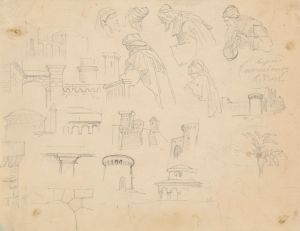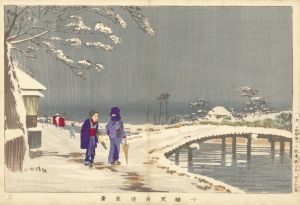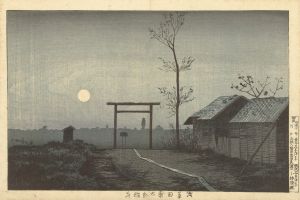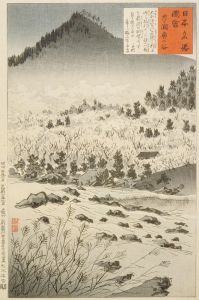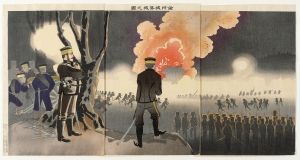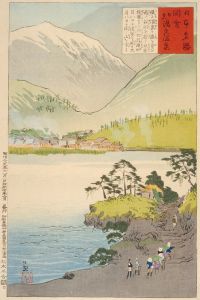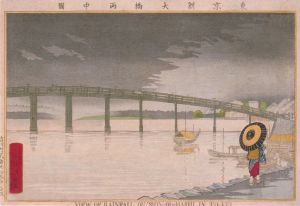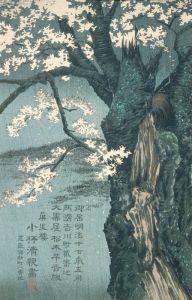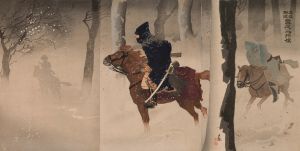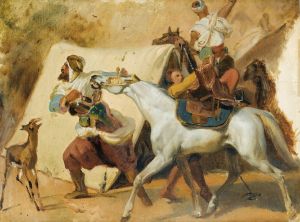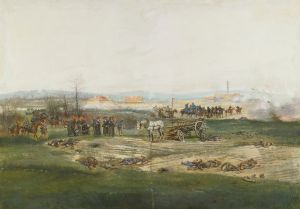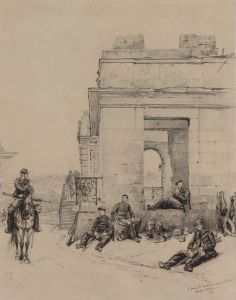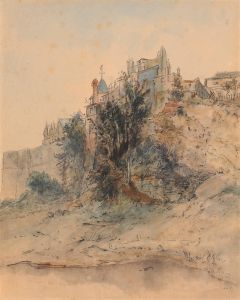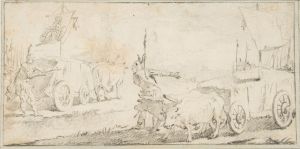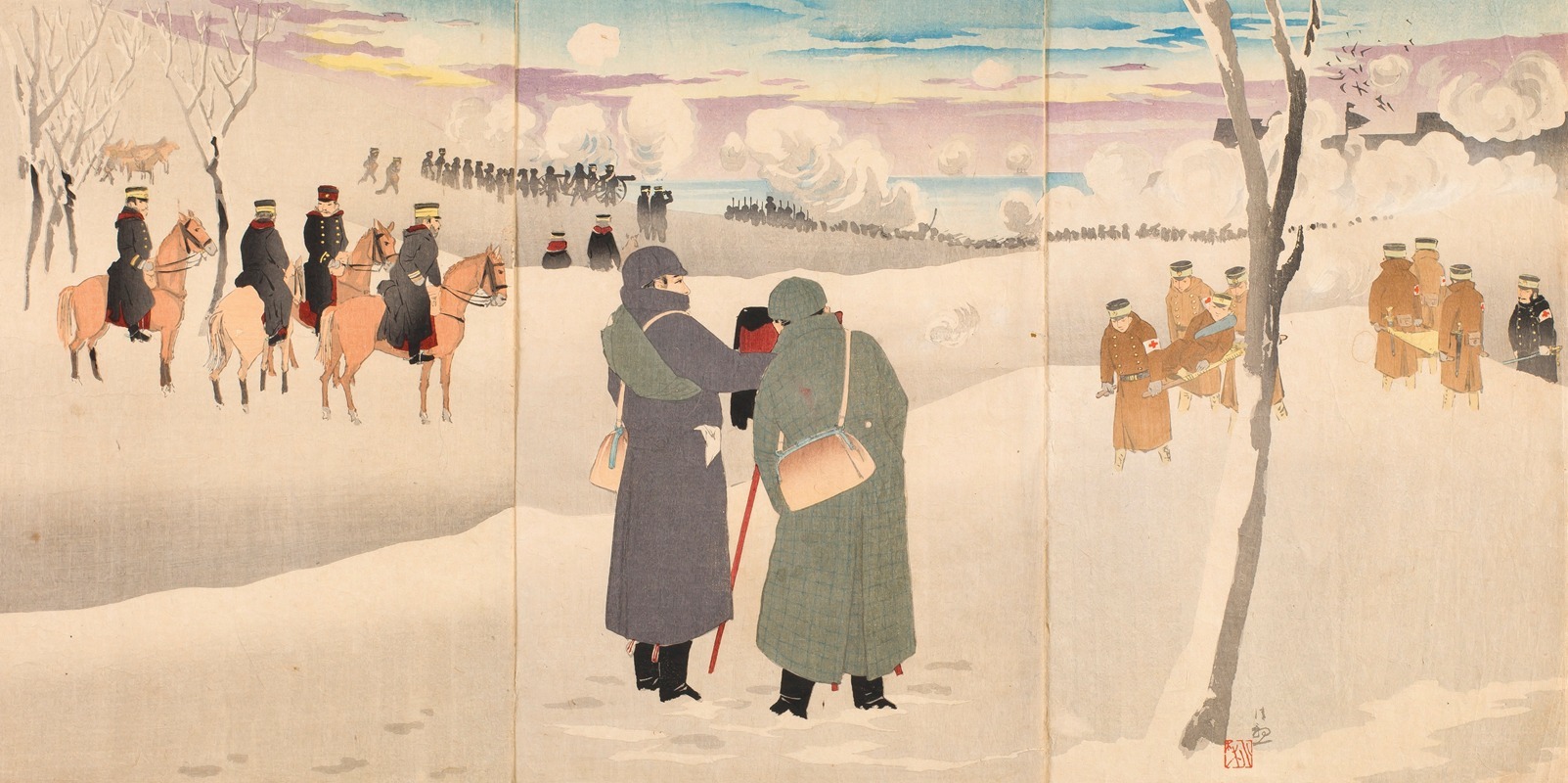
Photographing Our Troops Fighting on the Streets of Niuzhuang Fortress
A hand-painted replica of Kobayashi Kiyochika’s masterpiece Photographing Our Troops Fighting on the Streets of Niuzhuang Fortress, meticulously crafted by professional artists to capture the true essence of the original. Each piece is created with museum-quality canvas and rare mineral pigments, carefully painted by experienced artists with delicate brushstrokes and rich, layered colors to perfectly recreate the texture of the original artwork. Unlike machine-printed reproductions, this hand-painted version brings the painting to life, infused with the artist’s emotions and skill in every stroke. Whether for personal collection or home decoration, it instantly elevates the artistic atmosphere of any space.
"Photographing Our Troops Fighting on the Streets of Niuzhuang Fortress" is a woodblock print created by the Japanese artist Kobayashi Kiyochika. Kiyochika was an influential figure in the realm of ukiyo-e, a genre of Japanese art that flourished from the 17th through the 19th centuries. He is particularly noted for his works that depict scenes of modernity and warfare, capturing the transformative period of the Meiji Restoration in Japan.
This particular artwork is part of a series that Kiyochika produced during the First Sino-Japanese War (1894-1895), a conflict between the Qing Dynasty of China and the Empire of Japan primarily over influence in Korea. The war marked a significant shift in East Asian power dynamics, showcasing Japan's emergence as a modernized military power.
The print illustrates a scene from the Battle of Niuzhuang, which took place in 1895. Niuzhuang, located in present-day Liaoning Province, China, was a strategic location during the war. The Japanese forces aimed to capture it as part of their broader campaign to secure control over the Liaodong Peninsula. The battle was characterized by intense street fighting, as depicted in Kiyochika's work.
Kiyochika's print is notable for its dynamic composition and use of color, which vividly conveys the chaos and intensity of urban warfare. The artwork portrays Japanese soldiers engaged in combat within the streets of Niuzhuang Fortress, capturing the immediacy and drama of the battle. The inclusion of a photographer in the scene is particularly significant, as it highlights the role of media and documentation in modern warfare. This element reflects the growing importance of photography as a tool for recording and disseminating images of conflict during this period.
Kiyochika's work is often celebrated for its blend of traditional Japanese artistic techniques with Western influences, a hallmark of the Meiji era's cultural synthesis. His use of perspective and shading demonstrates an understanding of Western art practices, while the subject matter remains rooted in Japanese nationalism and the contemporary political climate.
The print serves as both a historical document and a piece of propaganda, emphasizing Japan's military prowess and modernity. It reflects the nationalistic fervor of the time and the country's aspirations to be recognized as a formidable power on the global stage. Through his art, Kiyochika contributed to the visual narrative of Japan's military campaigns, providing a lens through which contemporary audiences could engage with the events of the First Sino-Japanese War.
Overall, "Photographing Our Troops Fighting on the Streets of Niuzhuang Fortress" is a significant work within Kiyochika's oeuvre and the broader context of Japanese art from the Meiji period. It encapsulates the themes of modernization, conflict, and national identity that were prevalent in Japan at the turn of the 20th century.





